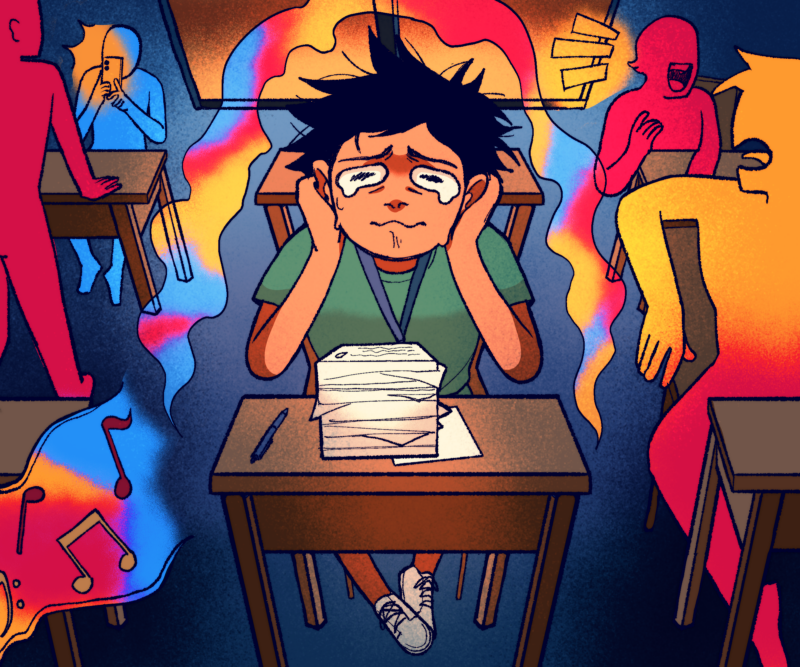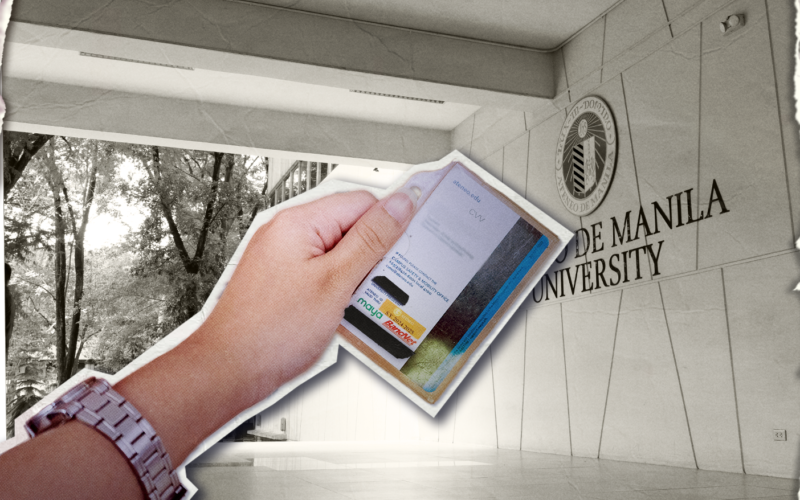GIRL, BOY, bakla, tomboy—that’s about as far as the gender and sexuality spectrum goes in the mindset of many, if not most, Filipinos. While terms such as silahis—referring to bisexuality—were introduced in the late 1980s, these remain to be rather obscure and vague words. Where, then, does that leave the transgender person in the understanding of many Filipinos?
Psychology Department Chair Mira Ofreneo, PhD, an expert on gender and sexuality, says that a variety of factors from religion to legislation to globalization interact and are associated with varied reactions and views on transgenderism. This is illustrated by Philippine studies and surveys on LGBTQIA acceptance. “It’s strange because [Filipinos] want to accept [LGBTQIA], but they believe it’s wrong because the Church cannot allow it. But there’s also a stand now of ‘I am Catholic, I believe in my faith and what it says about sexuality, but I do recognize people’s rights’—and so it’s more positive. I’ve seen that conflict in my students and in my gender and sexuality class,” she says.
Ofreneo describes how religion and the belief and advocacy for equal rights come together in a conflicted state. This tension also comes into play as it coexists with one’s participation in a highly globalized world. Filipinos are exposed to ideas of those from contexts where there is acceptance and civil equality for transgender people. “They’re all interacting. So it might be easy to immediately associate trans people with discrimination, but that’s not always how it is,” she says. “Even for trans people, while you might experience all this discrimination, you could also be very happy and find spaces where you could be accepted.”
Seemingly gender-blind
For transgender students Glenn Torres, AJ Salazar, and JM Tan, one of those spaces of acceptance is—for the most part—the Ateneo campus. Salazar describes the social atmosphere within the Loyola Schools as “a positive experience in general.” For Tan, the environment is a welcome change from that of other institutions. “In high school, we’d get sanctioned for being very effeminate. When I got to college, personally, it was very easy for me to be a transgender person,” she says.
Even when it comes to most of the faculty, Torres says the reactions are favorable for the transgender student community. “I pass by a lot of faculty, and I know they see me, but it’s not like they reprimand me. Conditions are more accepting and open here, people don’t even care about it [being transgender]. I think this is the healthiest environment I can be in,” she says.
A huge part of the social acceptance and peer support they feel is brought about by Dollhouse. While Dollhouse respects the heterogeneity of the LGBTQIA and does not claim to represent the entire LGBTQIA community in the Ateneo, it has proven to be a safe space for a number of transgender and other LGBTQIA students. “Being a getaway and a support group is what we place more importance on [as opposed to taking a more political stance as a student organization],” says Torres. In response to the possible climate of prejudice and discrimination faced by the LGBTQIA, Dollhouse aims to “develop character and attitude. It’s the culture ng tarayan, to try to help the person cope and develop a thick skin,” according to Torres.
A latent lack of sensitivity
Still, this positive image of the Ateneo school environment as vibrant, liberal, and progressive is not the whole picture. Both Torres and Salazar express difficulties they’ve faced, especially in relation to the random drug testing procedures run by the Office of Health Services (OHS). Torres recounts, “so when I got to the office, I filled out a form, diba? So siyempre my sex is male,” referring to sex at birth.
Torres says that when she stopped in front of the women’s lavatory, the male nurse said that he could not chaperone her there. As a group they then proceeded to the men’s lavatory, where “he [nurse] had the guys do it [provide urine samples] in the urinal while he [nurse] was in the premises. So medyo, ok weird for me.” However, Torres was relieved when she was allowed to use the cubicle instead. “But, the nurse didn’t let me close the door so that was still weird. I guess the rationale for that was for them to ensure that we don’t provide another urine sample. Yun nga, girls get to close the door in the cubicle.”
When asked if she wished the male nurse called the female nurse instead, Torres says, “nahiya naman ako (I was embarrassed to do so). I guess don’t know how I could have fought that rin.”
Apart from these, there remains a lot to be done in increasing gender and sexual orientation sensitivity among employees. Salazar says, “When I was called for a drug test, at first the nurses and doctors referred to me as ‘ma’am’ and ‘she’ so I thought they were gender sensitive. Then when I had to write my whole name and sex [on biodata sheet], one of the nurses said out loud, ‘ay lalaki pala.’ I felt na I was outed.”
In another instance of drug testing, Salazar describes how the physician assigned made inappropriate comments. “The doctor was making sex jokes, a reference to transgender sex workers on Q Ave. Na-off ako nun (it made me feel off),” she says.
Salazar reported this to the Office of Student Services (OSS) and after nearly a year, OSS got back to her. “They said that the doctor apologized na daw—to them [OSS], but not to me,” she shares.
OHS Director Ma. Henrietta Teresa O. dela Cruz, MD, says the OHS is dedicated to serving all with respect, regardless of gender. Drug testing staff are trained to be sensitive to all genders and sexualities and to offer alternatives to students.
On the way to change
In contrast, strides have been made by the university to accommodate the need for the transgender community to express themselves physically. These strides can be seen in the AEGIS, the university’s official yearbook organization. In 2014, Rica Salomon (AB IS ’14) argued for her right to do what the school deemed “crossdressing.” In response to this, the university formed a committee to review her case and set down the final rule on crossdressing in the yearbook photo. When the case was finished, a rule was made to allow crossdressing but a letter to AEGIS is required before the shoot.
The school’s overall policy on “crossdressing” is very open to the transgender community: It is allowed anywhere on campus as long as the general student dress code is followed. However, Salazar mentions that professors can easily override this rule. “May mga professors talaga nag-iimpose against it (There are professors who impose against the rule),” Salazar explains.
The basis for the rule, according to the OSS Director Michael Mallillin, is respect. “There are no specific policies, but we are guided by that principle,” Mallillin says. “We are guided by respect for the individual.” He mentions that they strive to strike a balance between accepting the LGBTQIA community and accommodating the more conservative in the Ateneo.
Beyond the boundaries
It is clear that the Ateneo espouses respect and inclusion for all under the gender and sexual orientation spectrum. Nonetheless, a mere attitude is inadequate in actually securing the freedom of expression and personal development of the transgender Atenean. “Ateneo says it’s inclusive, pero ‘di ko feel (I don’t feel it),” says Salazar.
These beliefs and ideologies of acceptance must be articulated and legitimized in policies and protocols that address the specific issues faced by the transgender community. It is through the implementation of such that the Ateneo can live up to its ideals of developing persons for others, regardless of gender and sexual orientation.
Internationally, colleges abroad are leading the way in terms of transgender reform. Merton College in Oxford is a leading example, with their comprehensive Transgender Guidance and Policy. Merton, in coordination with their transgender population, created this document to be able to more concretely handle the specific issues the transgender population may have. The counselling provided by Merton has been an especially important policy to the transgender community. The school helps transgender students come out to their families and gives parents counselling sessions to allow them to understand what their child is going through. In the end, the most important thing is to provide a support system for transgender students to make them feel more open about and comfortable with their identities.
Transition to action
The issue of transgender students is a tricky one, especially when the Ateneo aims to make sure everyone feels comfortable in the community. The administration’s idea of respect being the foundation of the transgender policy is noble.
However, this ideal is not enough to solve this issue. Concrete action needs to be taken, and these policies will shape where the university stands on these issues. The university needs to set an example to the students it aims to mold. The administration needs to understand that it cannot just sit by idly and deal with this issue by squeezing it between the margins of existing policy. Salazar provided a clear image of how the school looks at the issue.
“They think kasi na may other important issues na dapat tuunan ng pansin, kasi parang, ‘yun nga, sabi nila that were very inclusive naman of LGBT; we allow trans na nga to crossdress sa graduation (They think that the focus should be on other important issue. They think they’ve become inclusive enough to LGBT by allowing transgender students to crossdress during graduation),” she says.
The language Filipinos use in the day-to-day does not fully capture the lives of transgender students today; the policies reflect that. The Ateneo’s policies straddle the fine line of conservative offence and transgender denial. With its goal to “preserve, extend, and communicate truth,” the university must eventually choose where it stands.







